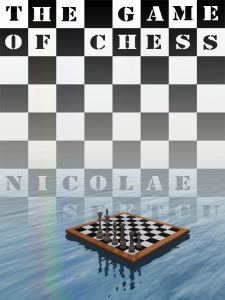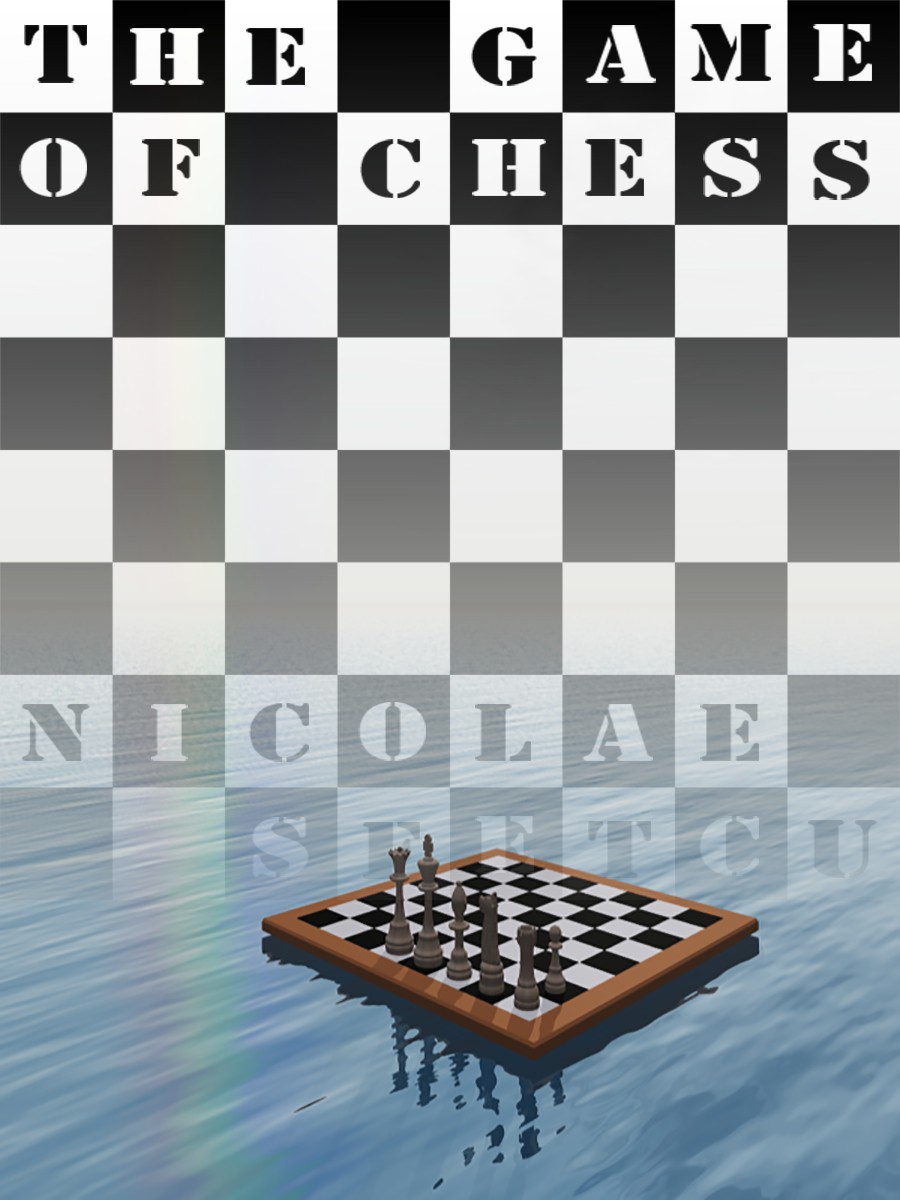 A comprehensive guide of chess: history, famous games and players, rules, strategy, tactics, chess and the computer, documentation and literature, variants.
A comprehensive guide of chess: history, famous games and players, rules, strategy, tactics, chess and the computer, documentation and literature, variants.
Chess (the “Game of Kings”) is a board game for two players, which requires 32 chesspieces (or chessmen) and a board demarcated by 64 squares. Gameplay does not involve random luck; consisting solely of strategy, (see also tactics, and theory). Chess is one of humanity’s more popular games; it is has been described not only as a game, but also as both art and science. Chess is sometimes seen as an abstract wargame; as a “mental martial art”.
CONTENTS:
The Game of Chess
– History
– Chess Guide overview
Games
– Types of Games
– Game theory
– – Types of games and examples
– – Risk aversion
– – Games and numbers
– – History
– – References
– Game classification
– Game of strategy
– – Related topics
– Strategy games
– – Abstract strategy
– – Simulation
– – Real-time strategy
– – Turn-based
– – War game
– – – General Strategy
– – – Turn-based
– – – Real-time (RTS)
– Board games
– – Two-player abstract strategy games
– – – Classic two-player abstract strategy games
– – – Modern two-player abstract strategy games
– – Two-player games of chance
– – Multi-player elimination games
– – European race games
– – Multiplayer games without elimination
– – Modern Wargames
– – Games of physical skill
– – Children’s games
– – Literature
History
– Origins of chess
– – Theories of the origin of chess
– – – India
– – – Ireland
– Early Literature
– – Byzantium
– – China
– – England
– – France
– – Germany
– – India
– – Italy
– – Persia
– – Spain
– – Sumatra
– – Switzerland
– – References
– Early Arabic chess literature
– Chess in Europe
– – See also
– – References
– Chess tournament history
– Cox-Forbes theory
– Shahnama theory
– Famous entities with chess related names
– – People
– – Cities
– – Other
– World records in chess
– – Longest game
– – Shortest tournament game
– – Latest first capture
– – Longest decisive game without a capture
Famous Games
– Immortal game
– – Introduction
– – Annotated moves of the game
– – References
– Evergreen game
– – References
– Opera game
– The Game of the Century
– – References
– Deep Blue – Kasparov, 1996, Game 1
– – Game Moves
– – References
Chess Players
– List of chess players
– Male players
– Female players
– Famous people who were/are avid chess players
– Also of note
– International Grandmaster
– World Champions
– – List of chess world championship matches
– – Notes
– World Junior Chess Championship
– Chess Rules
– – Rules of chess
– – The Board
– – Gameplay
– – – Move Sequence
– – – Movement
– – – Check, Checkmate
– – – Draws
– Equipment
– Chessboard
– Chess pieces
– Game Clock
– Time control
– Movements
– Bishop
– King
– Knight
– Pawn
– – Strategy
– Queen
– Rook
– Castling
– Fifty move rule
– Notations
– Algebraic chess notation
– – Comment Shorthand Notation
– Descriptive chess notation
– Computer Processing
– Forsyth-Edwards Notation
– – Definition
– – Examples
– Portable Game Notation
– – Tag Pairs
– – Movetext
– – Comments
– – Example
– Handling Chess Variants
– Fédération Internationale des Échecs
– FIDE Presidents
– E.I.01A. Laws of Chess
– ELO rating system
– – Previous ratings systems
– – Elo’s rating system model
– – Implementing Elo’s scheme
– – Comparative ratings
– – Mathematical Details
– Draw
– – Discouragement of draws by agreement
– Perpetual check
Strategy & Tactics
– Chess strategy and tactics
– Values of the pieces
– Tactics
– – Attacking and defending pieces
– – Forks
– – Pins
– – Skewers
– – Discovered attacks
– – Zwischenzug
– – Sacrifices
– – Attacks against the king
– Strategy
– – Opening
– – Space
– – Defending pieces
– – Exchanging pieces
– – Knights
– – Pawns
– – Bishops
– – Rooks
– – King
– – The Endgame
– Further reading
– Terminology
– – Chess terminology
– Check
– Underpromotion
– Sample chess game
– Tactics
– Fork
– Pin
– Combination
– Chess Opening
– – Aims of the opening
– – Common openings
– – – White Opens with “e4”
– – – – Ruy Lopez
– – – – Giuoco Piano
– – – – Two Knights Defence
– – – – Latvian Gambit
– – – – King’s Gambit
– – – – Sicilian Defense
– – – – French Defense
– – – – Caro-Kann
– – – – Center Counter
– – – – Pirc/Modern
– – – White Opens with “d4”
– – – – Queen’s Gambit
– – – – King’s Indian Defense
– – – – Nimzo-Indian, Bogo-Indian, and Queen’s Indian Defense
– – – – Dutch Defense
– – – White Opens with Something Other Than “e4” or “d4”
– – – – English Opening
– – Classification of chess openings
– – References
– List of chess openings
– A00
– – A00: Irregular Openings
– Sokolsky Opening
– – A00 Sokolsky Opening
– A00 Sokolsky Opening 1.b4 e5
– – 1.b4 e5 2.Bb2 Bxb4 3.Bxe5
– – 3…Nf6 4.c4
– – 4…Nc6
– – 5.Bb2 0?0 6.e3
– – 6…d5 7.Nf3 Bg4
– – 8.a3 Bd6 9.cxd5 Nxd5 10.Be2 Be7
– – 11.0?0 Bf6 12.d4 Re8 13.Nbd2 a6
– – 14.Qc2 Qd7 15.Bd3 g6
– – 16.h3 Bxf3
– – 17.Nxf3 Rad8 18.Rfd1 Bg7
– – 19.e4 Nf4
– – 20.Bf1 Ne7
– – 21.Rac1 c6 22.Ne5 Qc7
– – 23.g3 Bxe5 24.dxe5 Ne6 25.Rd6 c5 26.Rcd1 Nc8 27.R6d5 Ne7 28.Rxd8 Rxd8 29.Rxd8+ Qxd8
– Gambit
– Evans Gambit
– Latvian Gambit
– Smith-Morra Gambit
– – How to play it
– Defence
– French Defence
– – General considerations
– – 3. exd5 exd5 – the Exchange Variation
– – 3. e5 – the Advance Variation
– – 3. Nd2 – the Tarrasch Variation
– – 3. Nc3
– – – 3… dxe4 – the Rubinstein Variation
– – – 3… Bb4 – the Winawer Variation
– – – 3… Nf6 – the Classical Variation
– – Early deviations
– – ECO codes
– Grünfeld Defence
– Nimzo-Indian Defence
– Hypermodernism
– Endgames
– Lucena position
– – References
– Zugzwang
– Stalemate
– Smothered mate
– Endgame study
– – Further reading
Problems & Puzzles
– Chess problem
– Types of problem
– Beauty in chess problems
– Further reading
– Terminology
– – Chess problem terminology
– – References
– Tactical chess problems
– Collection of chess problems
– Sam Loyd
– – Books
– Albino
– Allumwandlung
– Helpmate
– – Further reading
– Shortest proof game
– – Further reading
– Babson task
– – Further reading
– Devices
– Grimshaw
– Novotny
– Plachutta
– Chess Puzzle
– Knight’s Tour
– Puzzle Solving
– – How to solve the knight’s tour
– – Introduction
– – – Step 1
– – – Step 2
– – A heuristic
– Eight queens puzzle
– – The eight queens puzzle as an example problem for algorithm design
– – Example program in Python
– – See also
Chess Computing
– Computer chess
– Brute force vs. strategy
– Brute force vs. humans
– Endgame Databases
– Computer chess implementation issues
– – Board Representations
– – Search Techniques
– – Leaf evaluation
– – Using endgame databases
– – Other optimizations
– – Standards
– Chronology of Computer Chess
– Other chess software
– Computer Chess theorists
– The future of computer chess?
– Deep Blue – Kasparov, 1996, Game 1 (chess)
– – Game Moves
– – References
– Fritz
– Deep Fritz
– GNU Chess
– XBoard
– Universal Chess Interface
Documentation
– Chess columns in newspapers
– Chess libraries
– Chess game collection
– Opening manual
– ChessBase
Chess Variants
– Handicap variants
– Fantasy variants
– Chess-related national games
– Fischer Random Chess
– – Starting Position
– – Castling
– – – Rules for Castling
– – – How to Castle
– – – Castling Rule Ambiguities
– – Playing Fischer Random Chess
– – Recording Games
– – Starting Position Ids
– – Other Ways to Create Initial Positions
– – – Coin-Tossing Method
– – – Drawing Methods
– – – Non-Random Setups
– – History
– – Naming
– Fantasy Chess
– Alice Chess
– Antichess
– – Other names for the game
– Atomic Chess
– Avalanche chess
– Baroque chess
– – See also
– Bughouse chess
– – Bughouse Strategy
– – Where to play
– Capablanca Chess
– Circe chess
– Grand Chess
– Grid chess
– Kriegspiel
– Madrasi chess
– Martian Chess
– – Rules
– – – Initial setup
– – – Movement and capturing
– – – End of game and scoring
– – Strategy
– Monster Chess
– Omega chess
– – The New Pieces
– Patrol chess
– Progressive chess
– Three-dimensional chess
– Fairy Chess Piece
– – Classification of fairy pieces
– – – Leapers
– – – Riders
– – – Hoppers
– – Royal pieces
– – List of orthodox and fairy chess pieces
– Andernach chess
Miscellaneous
– Chess Olympiad
– – Men’s olympiads
– Chess as mental training
– – Sources
– Correspondence chess
– Lewis chessmen
– – Bibliography
– Chess-related deaths
License
– GNU Free Documentation License
About the author
– Nicolae Sfetcu
– – Contact
Publishing House
– MultiMedia Publishing
